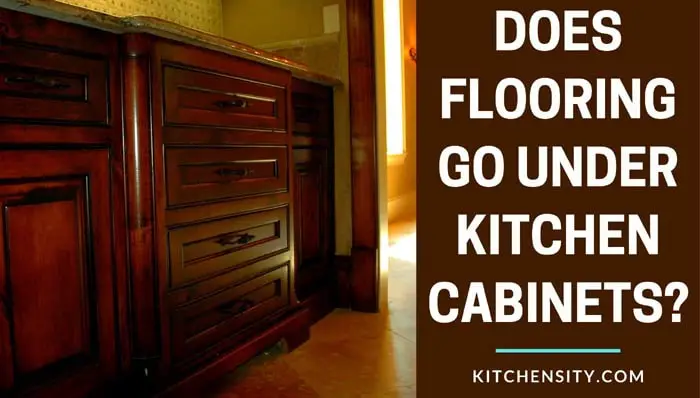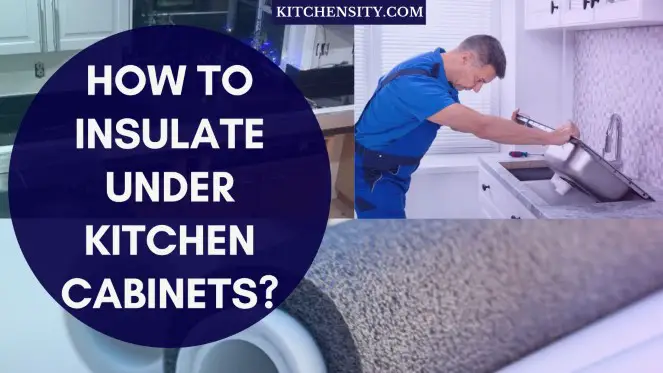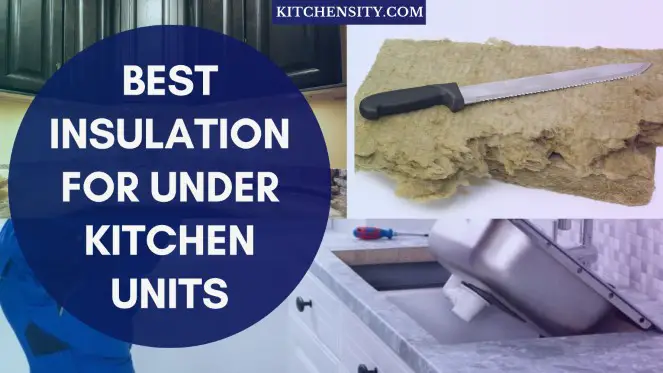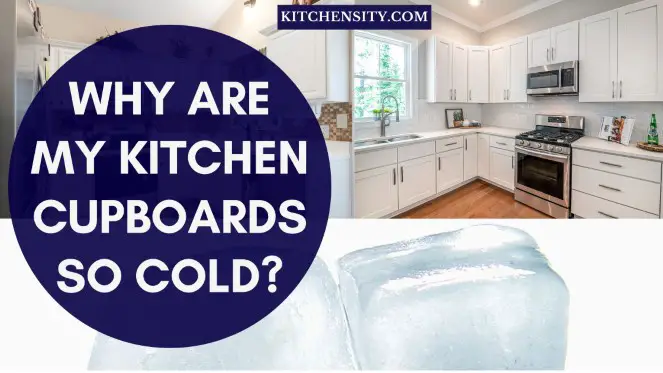Are you tired of feeling a chilly draft coming from your kitchen cabinets?
Not only can drafts make your kitchen uncomfortable, but they can also increase your energy bills.
Luckily, there are several ways to draft-proof your under kitchen cabinets.
In this article, we will discuss the best methods for draft-proofing your under kitchen cabinets.
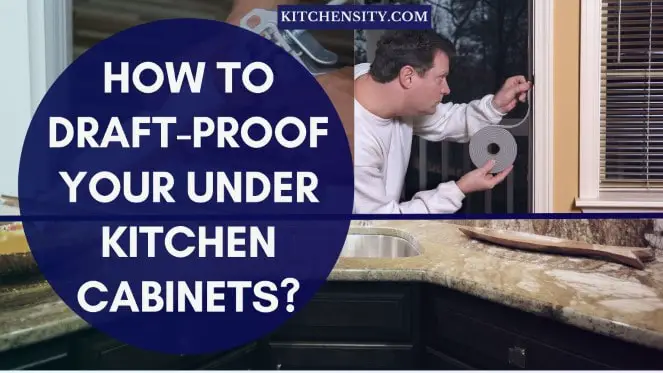
Table of Contents
- 1 Methods To Draft-Proof Your Under Kitchen Cabinets
- 1.1 1. Identify The Draft Sources
- 1.2 2. Seal Gaps Between Cabinets And Walls
- 1.3 3. Seal Gaps Between Cabinets And Floors
- 1.4 4. Seal Gaps Between Cabinets
- 1.5 5. Install Under Cabinet Lighting
- 1.6 6. Use Draft Stoppers
- 1.7 7. Add Insulation
- 1.8 8. Replace Cabinet Doors
- 1.9 9. Check For Leaks In the Plumbing
- 1.10 10. Consider A Professional Inspection
- 2 YOU MAY ALSO LIKE
- 3 Conclusion
- 4 FAQs
- 4.1 How Do I Know If I Have A Draft In My Kitchen Cabinets?
- 4.2 What Is The Best Material To Use For Draft Stoppers?
- 4.3 How Much Does It Cost To Draft-Proof Kitchen Cabinets?
- 4.4 Can Draft-Proofing My Kitchen Cabinets Save Me Money On My Energy Bills?
- 4.5 What If I Still Have Drafts After Draft-Proofing My Kitchen Cabinets?
Methods To Draft-Proof Your Under Kitchen Cabinets
To draft-proof under kitchen cabinets, you can take several steps such as sealing gaps between cabinets, installing under-cabinet lighting, using draft stoppers, adding insulation, replacing cabinet doors, checking for leaks in plumbing, and considering a professional inspection.
By implementing these methods, you can prevent drafts from entering your cabinets and make your kitchen more comfortable.
Here are the drafting methods:
1. Identify The Draft Sources
Identifying draft sources is an essential first step in draft-proofing your kitchen cabinets. Here are some common areas to check for drafts:
- Cabinet Doors: Inspect the edges of your cabinet doors for any gaps or cracks where air could be escaping.
- Cabinet Frames: Check the frames of your cabinets for any gaps or openings that could allow air to pass through.
- Plumbing Penetrations: Look for any holes or gaps around plumbing pipes that enter your cabinets.
- Electrical Outlets: Electrical outlets on your kitchen walls can sometimes be a source of drafts.
- Flooring: If there are any gaps or cracks in your kitchen floor, air can seep through and cause drafts.
- Windows And Doors: Check the windows and doors in your kitchen for any gaps or openings that could be allowing air to enter.
- Exhaust Fans: If you have an exhaust fan in your kitchen, make sure that it is properly sealed and not allowing air to escape.
Once you have identified the draft sources, you can begin to draft-proof your kitchen cabinets.
2. Seal Gaps Between Cabinets And Walls
Sealing gaps between cabinets and walls is an effective way to reduce drafts in your kitchen cabinets.
Over time, gaps can develop between the cabinets and walls, allowing air to seep through and cause drafts.
Here’s how you can seal those gaps:
- Clean The Area: Before sealing the gaps, make sure the area is clean and free of any debris or dust.
- Choose A Sealant: There are a variety of sealants available, including silicone caulk and expanding foam. Choose a sealant that is appropriate for the type of material your cabinets and walls are made of.
- Apply The Sealant: Apply the sealant to the gaps between the cabinets and walls, making sure to fill in any openings completely. Use a putty knife or caulking gun to spread the sealant evenly.
- Smooth The Sealant: Use a wet finger or a caulk smoothing tool to smooth out the sealant and ensure that it is evenly distributed.
- Allow The Sealant To Dry: Depending on the type of sealant you use, it may take several hours or even a full day for the sealant to fully dry.
Once the sealant is dry, check for any remaining gaps or openings and apply additional sealant if necessary.
This simple and affordable solution can go a long way in reducing drafts in your kitchen cabinets.
3. Seal Gaps Between Cabinets And Floors
Another common source of drafts in kitchen cabinets is gaps between the cabinets and the floor.
In addition to using sealant, another effective way to seal gaps between cabinets and floors is by using foam weather stripping.
Weatherstripping is a type of material that is designed to seal gaps and prevent drafts.
It is typically made from foam or rubber and comes in a variety of sizes and shapes.
To use foam weather stripping to seal gaps between cabinets and floors:
- You will need to measure the length of the gap and cut a piece of weather stripping to fit.
- Make sure to choose weather stripping that is the appropriate size and shape for the gap you are sealing.
- For example, if the gap is very narrow, you may need to use a thinner strip of weather stripping.
- Once you have the weather stripping cut to the right size, simply press it into place between the cabinet and the floor.
- Make sure to press the weather stripping firmly into the gap to ensure that it creates a tight seal.
- You may need to use a putty knife or other tool to help you press the weather stripping into place.
Foam weather stripping is a quick and easy way to seal gaps between cabinets and floors, and it can be particularly effective for small or narrow gaps.
By sealing these gaps, you can help to keep your kitchen warmer and more comfortable and reduce your energy costs by preventing drafts from entering your home.
4. Seal Gaps Between Cabinets
Gaps between cabinets can also contribute to drafts in your kitchen. To seal these gaps, you can use a foam backer rod.
Here are the steps to seal gaps between cabinets:
- Identify any gaps between cabinets that may be contributing to drafts in your kitchen.
- Purchase a foam backer rod from your local hardware store. Make sure the size of the backer rod you choose matches the size of the gap you need to fill.
- Insert the backer rod into the gap between the cabinets, pushing it down until it is flush with the surface of the cabinets.
- Use a putty knife or a similar tool to press the backer rod into place, making sure it is snug and secure.
- Once the backer rod is in place, you can seal the gap completely with a bead of caulk or sealant.
- Choose a caulk or sealant that is appropriate for the materials your cabinets are made of, and apply it evenly along the gap.
- Smooth out the caulk or sealant with a wet finger or caulk smoothing tool, making sure to fill in any gaps or holes completely.
By sealing gaps between your cabinets, you can help to prevent drafts from entering your kitchen and making it feel colder.
It’s important to use the right materials and techniques to ensure a tight seal and long-lasting results.
5. Install Under Cabinet Lighting
Not only can under-cabinet lighting improve the appearance of your kitchen, but it can also help to reduce drafts.
By adding lighting to the underside of your cabinets, you can create a barrier that prevents drafts from entering your cabinets.
Here are the steps to install under cabinet lighting:
- Choose the type of under-cabinet lighting that will work best for your needs. Options include LED strips, puck lights, and light bars.
- Measure the length of the cabinets where you plan to install the lighting and purchase the appropriate amount of lighting for the space.
- Decide whether you want the lighting to be hardwired or plug-in. If you choose hardwired, you’ll need to hire an electrician to install the wiring. If you choose plug-in, you’ll need to ensure there is an electrical outlet nearby.
- Turn off the power to the area where you’ll be installing the lighting.
- Install the mounting hardware for the lights on the underside of the cabinets, following the manufacturer’s instructions.
- Connect the lights to the power source, either by wiring them directly into the electrical system or by plugging them into an outlet.
- Turn on the power and test the lights to make sure they are working properly.
By installing under-cabinet lighting, you can not only improve the appearance of your kitchen but also create a barrier that helps to prevent drafts from entering your cabinets.
This can make your kitchen feel more comfortable and help to lower your energy bills.
6. Use Draft Stoppers
Another effective way to draft-proof your kitchen cabinets is to use draft stoppers. These are strips of foam or rubber that can be attached to the bottom of your cabinets.
Draft stoppers are an easy and effective solution for preventing drafts from entering your kitchen cabinets. Here’s how to use them:
- Purchase foam or rubber draft stoppers that are the appropriate size for your cabinets.
- Clean the bottom of your cabinets thoroughly to ensure a good adhesion surface for the draft stoppers.
- Cut the draft stoppers to the correct length and attach them to the bottom of your cabinets, creating a tight seal.
- Make sure that the draft stoppers are securely attached and have no gaps where air can seep through.
By using draft stoppers, you’ll not only keep drafts out of your cabinets but also improve the energy efficiency of your kitchen.
These stoppers are affordable and easy to install, making them a great DIY solution for any homeowner looking to make their kitchen more comfortable.
7. Add Insulation
If your cabinets are located on an exterior wall, they may be lacking insulation. This can allow drafts to enter your cabinets and make your kitchen uncomfortable.
Adding insulation to your cabinets can be an effective way to eliminate drafts.
Here are the steps you can follow to add insulation to your kitchen cabinets:
- Determine If Your Cabinets Need Insulation: If your cabinets are located on an exterior wall and feel cold to the touch, then they likely need insulation.
- Choose The Insulation Material: There are different types of insulation materials available in the market, but spray foam insulation is one of the best options for insulating kitchen cabinets. It expands to fill gaps and provides an airtight seal.
- Prep Your Cabinets: Before applying the spray foam insulation, make sure to remove any objects from your cabinets and clean them thoroughly.
- Apply The Spray Foam Insulation: Wear gloves and protective eyewear while applying the insulation. Use the spray foam insulation canister to apply the foam to the inside of the cabinet walls. Be careful not to over-apply the foam as it can expand and create a mess.
- Allow The Foam To Dry: Let the foam dry for at least 24 hours before re-attaching the cabinet doors and using your cabinets again.
By adding insulation to your kitchen cabinets, you can ensure that they are well-protected against drafts and keep your kitchen comfortable.
8. Replace Cabinet Doors
If your cabinet doors are old or damaged, they may not be providing a tight seal. This can allow drafts to enter your cabinets.
Replacing old or damaged cabinet doors is an effective way to improve the insulation of your kitchen cabinets and prevent drafts.
Here are some steps you can follow:
- Measure Your Cabinet Openings: Before purchasing new doors, measure the dimensions of your existing cabinet openings. This will ensure that the new doors fit properly.
- Choose Energy-Efficient Doors: Look for doors that are specifically designed for insulation and energy efficiency. These doors are typically made with materials like wood, fiberglass, or vinyl, and feature insulation between the panels.
- Install The New Doors: Once you have your new doors, remove the old doors from your cabinets and install the new doors in their place. Make sure the doors fit snugly and create a tight seal.
By replacing your cabinet doors with energy-efficient options, you can improve the insulation of your cabinets and prevent drafts from entering.
Additionally, newer doors can improve the overall appearance of your kitchen.
9. Check For Leaks In the Plumbing
Leaks in your kitchen plumbing can cause drafts and water damage.
It is important to regularly check for leaks and repair them as soon as possible to prevent any further damage.
Here are some steps you can take to check for and fix leaks in your kitchen:
- Check Under Your Sink: This is a common area for leaks to occur, especially around the pipes and connections. Look for any signs of water damage, such as discoloration or warping of the cabinet.
- Inspect Your Dishwasher: Check the connections to your dishwasher for any signs of leaks. This includes the water supply line, drain hose, and connection to the garbage disposal.
- Fix Any Leaks: If you find any leaks, it is important to fix them as soon as possible. This can include tightening loose connections, replacing damaged pipes, or using a plumber’s tape to seal small leaks.
- Call A Professional: If you are unsure of how to fix a leak, or if the damage is extensive, it may be best to call a professional plumber. They can identify the source of the leak and make the necessary repairs to prevent further damage.
By checking for and fixing any leaks in your kitchen plumbing, you can help to prevent drafts and water damage in your kitchen cabinets.
10. Consider A Professional Inspection
If you’ve followed all of the above methods and still experiencing drafts in your kitchen cabinets, it may be time to call in a professional for help.
A professional can perform a thorough inspection of your cabinets and identify any additional sources of drafts.
Here are some things that a professional might do during an inspection:
- Check for air leaks in the walls and ceiling around the cabinets.
- Check the condition of the ductwork and ventilation system to ensure that air is flowing properly.
- Look for gaps or cracks in the flooring around the cabinets.
- Check the overall condition of the cabinets and make sure they are properly installed and sealed.
- Use specialized equipment such as a thermal imaging camera to identify areas where drafts are entering your cabinets.
Once the inspection is complete, the professional can provide you with a detailed report of their findings and recommend the best course of action to fix any issues.
This may involve additional repairs or upgrades to your cabinets, such as installing additional insulation or replacing damaged or outdated doors.
By working with a professional, you can ensure that your kitchen cabinets are properly sealed and free from drafts, which can help you save energy and keep your kitchen comfortable year-round.
Draft-proofing your under kitchen cabinets is an easy and cost-effective way to make your kitchen more comfortable and energy-efficient.
By following these tips, you can reduce drafts and enjoy a warmer, more inviting kitchen.
YOU MAY ALSO LIKE
- How To Stop A Draught From Behind Kitchen Cupboards?
- Why Are My Kitchen Cupboards So Cold?
- How to Insulate Under Kitchen Cabinets?
- Best Insulation for Under Kitchen Units
- How to Insulate Under Kitchen Sink?
- Best Insulation Under The Kitchen Sink
- Can You Use Loft Insulation Under Kitchen Cabinets?
- What Can I Put Under My Kitchen Sink to Protect My Cabinets?
Conclusion
In conclusion, draft-proofing your under kitchen cabinets is an essential step to ensure a comfortable and energy-efficient home.
By following the tips and techniques mentioned in this guide, you can prevent cold air from seeping into your kitchen cabinets and maintain a warmer, cozier space.
From simple DIY solutions like adding draft stoppers or installing under-cabinet lighting to more complex tasks like insulation and professional inspection, there are a variety of options available to you.
By taking the time to draft-proof your kitchen cabinets, you can save money on energy bills and make your home a more comfortable place to live.
FAQs
-
How Do I Know If I Have A Draft In My Kitchen Cabinets?
You may feel a cold breeze coming from your cabinets or notice that your kitchen is colder than the rest of your home.
-
What Is The Best Material To Use For Draft Stoppers?
Foam and rubber are both effective materials for draft stoppers.
-
How Much Does It Cost To Draft-Proof Kitchen Cabinets?
The cost can vary depending on the size of your kitchen and the materials used, but it is generally an affordable DIY project.
-
Can Draft-Proofing My Kitchen Cabinets Save Me Money On My Energy Bills?
Yes, draft-proofing your cabinets can help to reduce your energy bills by preventing heat loss.
-
What If I Still Have Drafts After Draft-Proofing My Kitchen Cabinets?
If you have tried all of these methods and are still experiencing drafts, it may be a sign of a larger issue and it’s best to consult a professional.
Katrina Smith is a seasoned expert with over 25 years of experience in all things related to cooking and the kitchen. As an avid cook and kitchen enthusiast, she is passionate about sharing her knowledge and expertise on cookware, kitchen appliances, kitchen tips, and kitchen staples.
Through her articles and reviews, Katrina aims to inspire and help others improve their cooking skills, experiment with different ingredients, and invest in quality cookware and appliances.

![3 Effective Ways To Update Old Kitchen Cabinets [Under $100] 3 How To Update Old Kitche Cabinets](https://www.kitchensity.com/wp-content/uploads/2021/05/How-To-Update-Old-Kitche-Cabinets.jpg)
![Refacing Kitchen Cabinets: An Ultimate DIY Guide [2023] 4 Refacing Kitchen Cabinets](https://www.kitchensity.com/wp-content/uploads/2021/05/Refacing-Kitchen-Cabinets.jpg)
